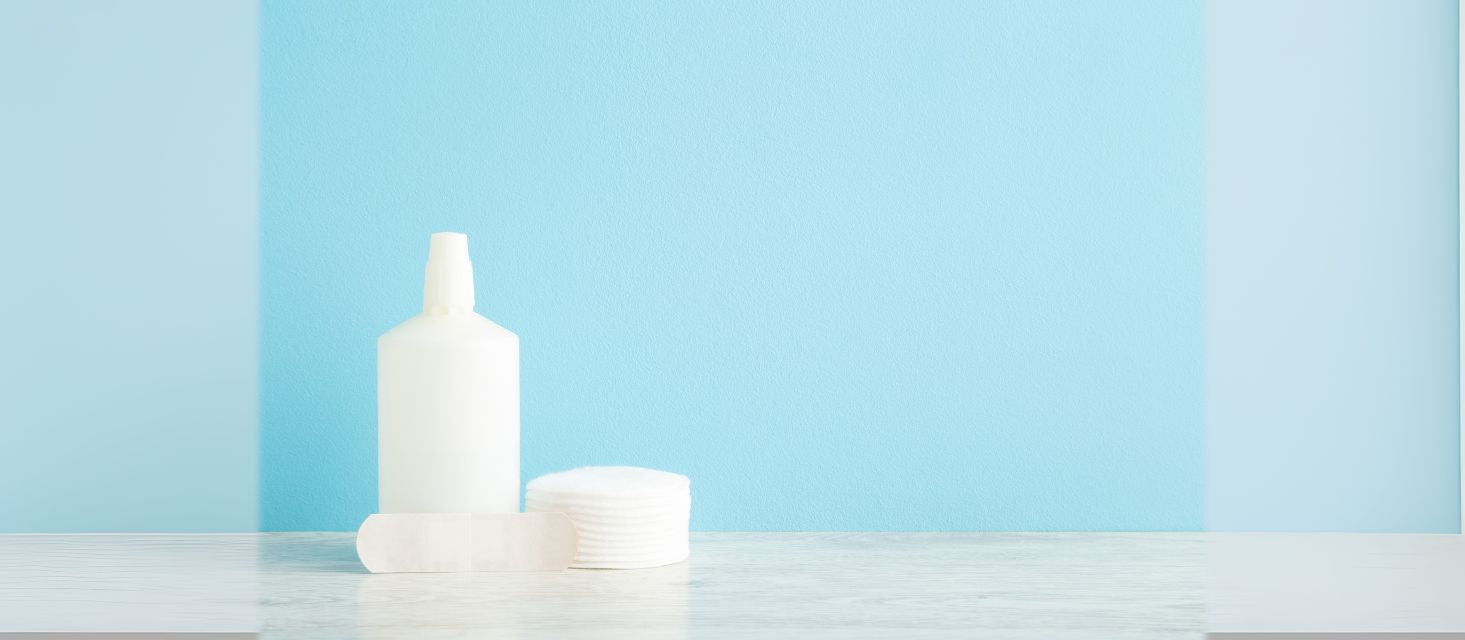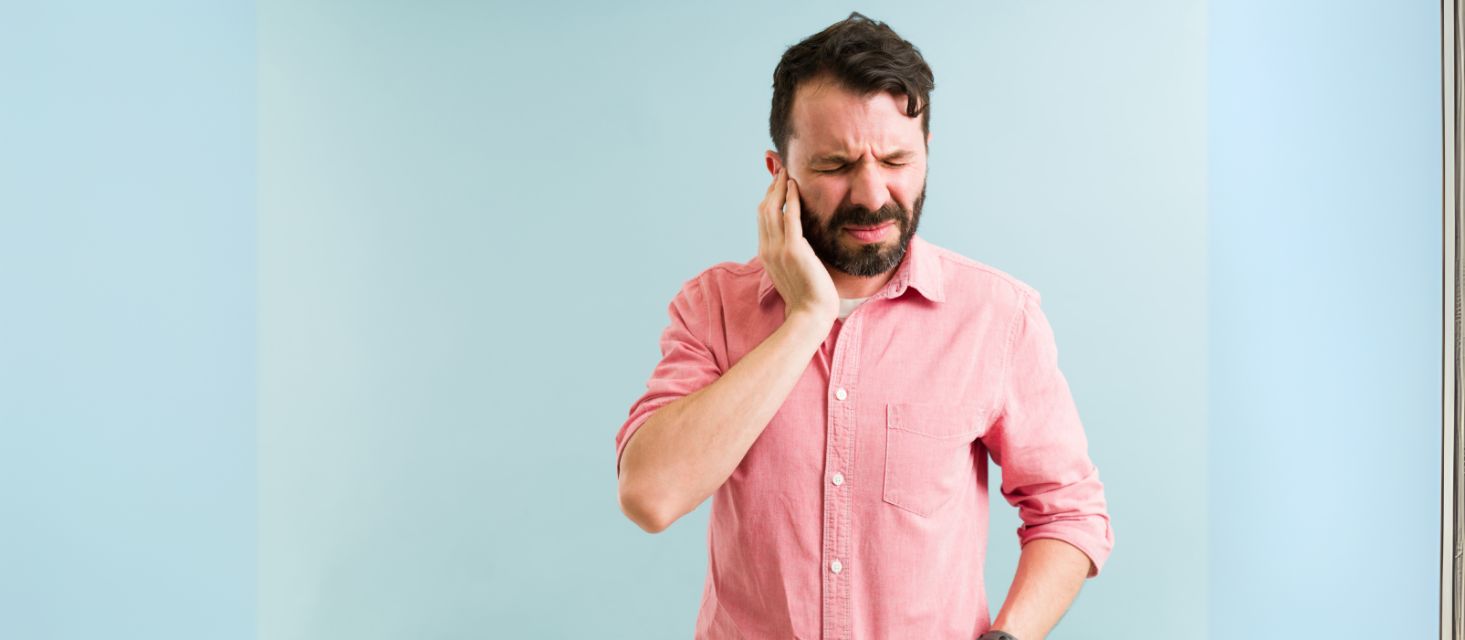Ear infections and earwax buildup can cause significant discomfort, and finding safe and effective treatments is important. Hydrogen peroxide has long been a popular at-home remedy for ear health. This guide explores its benefits, risks, and safe application methods while addressing common concerns about using peroxide for ear care.
What is Hydrogen Peroxide?
Hydrogen peroxide is a chemical compound with antiseptic properties. It is commonly used to clean wounds, disinfect surfaces, and dissolve earwax. This solution works by releasing oxygen when it comes into contact with organic matter, which helps kill bacteria. Its bubbling effect is especially effective for earwax removal and mild ear infections. Use hydrogen peroxide carefully, as improper application can cause ear discomfort or irritation.
How Does Hydrogen Peroxide Work in the Ear?
Hydrogen peroxide works by breaking down earwax and killing bacteria in the ear canal. When a few drops are applied to the affected ear, it reacts with the wax, creating bubbles. This process helps dissolve earwax and clears debris. The bubbling action also disrupts bacterial growth, which may prevent or alleviate minor infections. However, too much hydrogen peroxide or improper use can irritate the ear canal or sensitive skin.
Can Hydrogen Peroxide Help With Ear Infections?
Hydrogen peroxide can be helpful for certain types of ear infections, like swimmer's ear, by cleaning the ear canal and reducing bacterial buildup. It is not a substitute for antibiotics or professional care in severe cases. If ear pain persists or there are signs of a damaged eardrum, consult a doctor. While hydrogen peroxide may alleviate mild discomfort, always use it cautiously to avoid complications.
Benefits of Using Hydrogen Peroxide for Ear Health
Hydrogen peroxide has gained popularity as a reliable at-home remedy for ear health. Its antiseptic properties and ability to dissolve earwax make it a convenient choice for maintaining clean ears. Here are some key benefits you can expect:
-
Affordable and readily available for home use.
-
Effective at removing earwax and cleaning the ear canal.
-
Helps kill bacteria and reduce the risk of minor ear infections.
-
Provides an alternative to more invasive procedures.
-
Useful for occasional ear cleaning as part of at-home remedies.
Risks and Side Effects of Using Hydrogen Peroxide in the Ear
While hydrogen peroxide offers several advantages, it’s important to be cautious about its use. Misusing it or overusing it can lead to discomfort or even damage. Before you decide to use hydrogen peroxide, consider these risks and side effects:
-
Overuse or too much hydrogen peroxide can irritate the ear canal.
-
May cause mild discomfort or bubbling sensations in the ear.
-
Can worsen symptoms for individuals with sensitive skin.
-
Risk of complications if used with a damaged eardrum.
-
Improper application may push wax deeper into the ear.
Step-by-Step Guide to Safely Use Hydrogen Peroxide in the Ear
Preparation and Materials
To safely use hydrogen peroxide, gather a hydrogen peroxide solution, a dropper, a clean towel, and warm water. Ensure your hands and materials are clean to prevent introducing bacteria into the ear canal.
Application Instructions
With your head tilted, place a few drops of hydrogen peroxide into one ear. Let it sit for a few minutes to allow the solution to work. You may hear bubbling, which indicates it is breaking down earwax or killing bacteria.
Post-Treatment Care
Afterward, gently dry the ear with a clean towel. Rinse with warm water if necessary. Avoid using q-tips, as they can push wax deeper or irritate the ear canal. If discomfort persists, stop using hydrogen peroxide.
Alternative Treatments for Ear Infections
At-home remedies such as warm water rinses, olive oil, or over-the-counter earwax removal drops can help clear the ear canal. Infections requiring antibiotics or persistent pain should be addressed by a healthcare professional. Avoid using home remedies if you suspect a damaged eardrum.
When to See a Doctor Instead of Using Hydrogen Peroxide
If symptoms like severe ear pain, persistent hearing loss, or discharge occur, seek medical advice immediately. A doctor may recommend antibiotics, antibiotic ear drops, or specialized earwax removal procedures. These are often safer and more effective than home treatments for severe conditions.
Common Myths About Hydrogen Peroxide in the Ear
A common myth is that hydrogen peroxide is always safe for ear care. In reality, too much hydrogen peroxide or improper application can harm the ear. Another misconception is that it can cure all ear infections, but professional treatments are often necessary.
Tips for Maintaining Healthy Ears
Keeping your ears healthy goes beyond occasional cleaning. Adopting safe practices and seeking professional care when needed can help you avoid common ear issues. Follow these tips to maintain optimal ear health:
-
Avoid using q-tips, as they can irritate the ear canal or worsen blockages.
-
Use warm water or olive oil for gentle earwax removal.
-
Limit hydrogen peroxide use to occasional cleaning or as advised by a doctor.
-
Protect ears from excessive moisture to prevent swimmer's ear.
-
Schedule regular check-ups with an ear specialist to monitor ear health.
Closing Insights
Hydrogen peroxide can be effective for ear wax removal and minor ear infections. However, it is not suitable for all conditions. Use it cautiously, following expert advice, and seek medical care for severe issues like ear pain, hearing loss, or infection symptoms.
FAQs
Is it safe to put peroxide in an infected ear?
Yes, it is generally safe to put peroxide in an infected ear if used carefully. A hydrogen peroxide solution can help clean the ear canal and remove earwax, which may reduce bacterial growth. However, avoid using it if you have a damaged eardrum or persistent pain, and always consult a doctor for severe ear infections.
How long does it take for hydrogen peroxide to work in the ear?
Hydrogen peroxide typically takes a few minutes to work in the ear. When applied, it reacts with earwax, bubbling and breaking it down for easy removal. For mild ear infections, it may help clean the ear canal, but its effectiveness depends on the severity of the condition.
What not to do with an ear infection?
When dealing with an ear infection, avoid using q-tips, as they can push earwax deeper into the canal. Don’t rely solely on home remedies like peroxide for severe cases. Never ignore persistent symptoms such as ear pain or discharge; seek medical advice promptly for proper treatment.
What is the fastest way to get rid of an ear infection in adults?
The fastest way to get rid of an ear infection in adults is by using prescribed antibiotics or antibiotic ear drops. For minor cases, at-home remedies like a hydrogen peroxide solution can help clean the ear. However, professional medical advice is essential for effective and safe treatment.








Share:
Related Blogs
Wax Removal from Ear at Home: A Complete Guide
Who Does Ear Syringing?